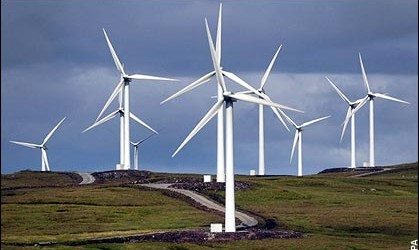The operator of South Australia’s electricity transmission network has dismissed two myths about wind energy currently peddled by anti-wind groups within and outside the ruling Coalition government.
ElectraNet, which operates the network in the state with by far the largest penetration of wind energy in Australia – more than 30 per cent with the imminent connection of the Snowtown 2 wind farm – says it is clear that wind energy has “substantially” reduced greenhouse gas emissions, and has not resulted in any added costs to the network.
This directly contradicts two claims made by the anti-wind lobbyists, including Tony Abbott’s main business advisor Maurice Newman. They insist that wind energy does not reduce emissions, and adds greatly to network costs.
 ElectraNet, however, could not be any clear in dismissing this as nonsense.
ElectraNet, however, could not be any clear in dismissing this as nonsense.
In its submission to the government’s RET Review panel, it noted it had already connected 1,200MW of wind energy capacity, with another 270MW to be connected with Snowtown 2.
“This level of renewable penetration has substantially reduced greenhouse gases produced by the electricity sector in South Australia, and made a contribution to greenhouse gas abatement across the interconnected network.”
And then, on the issue of network costs:
“The connection of wind generation in South Australia has been achieved without the requirement for additional transmission network charges to electricity consumers,” it writes.
“Studies undertaken by ElectraNet indicate that there are no immediate network capacity or network stability barriers to further wind generation connection in South Australia to unlock more of the state’s renewable energy resources.”
South Australia has more than 2,000MW of wind projects in the pipeline, and if only a few of those projects are developed wind and solar could contribute more than 50 per cent of the state’s demand, reaching towards 100 per cent within a decade if official forecasts for the take-up of rooftop solar and energy efficiency are realized.
ElectraNet said it was clear, however, that policy uncertainty had caused investment to come to a halt (Snowtown 2 was committed in 2012).
Its comments about transmission costs and emissions reductions are not the only myths blown away in recent weeks. The government’s own modelling has dismissed suggestions that the RET increases costs to consumers (although Abbott keeps insisting that it does), and also rejected arguments from fossil fuel generators that the target would be impossible to meet.
Still, it seems inevitable that the government will scale the target back, in any case, to protect the revenues and asset values of coal and gas plants, including those that the Queensland government are trying to sell.








